New report on changes in the Apple App Store algorithm explains how even minor rating shifts affect the most popular applications.
Recently, a new report was published confirming previously detected changes in the iTunes App Store. Indeed, now to determine the location of a mobile application, the list takes into account not only estimates, but also other parameters. According to Appurify - a startup sponsored by Google Ventures and dedicated to debugging, testing and optimizing applications - now not only the rating of the application is taken into account: even an improvement in the average rating by half a star can significantly push the application on the list and increase the frequency of reviews. And this, in turn, can help well-designed applications climb higher in the charts.
The report also deals with other aspects of this change, including the number of stars counted and the importance of mobile app updates.
These discoveries are the result of two months of work for the Appurify team, which now also includes specialists from cisimple, a competing application testing firm that joined Appurify in August.
In Appurify analyzed the first thousand applications in the list of iTunes App Store, among which was a third of games, 62 paid applications and 590 free applications with the ability to expand functionality for an additional fee. More than half of the applications on this list had at least 4.5 stars, and most of them (75%) were rated at least 4 stars. This discovery is not surprising, but Appurify emphasizes that, apparently, now the presence of 4 stars has practically become the minimum requirement for getting into the first 1000.
')
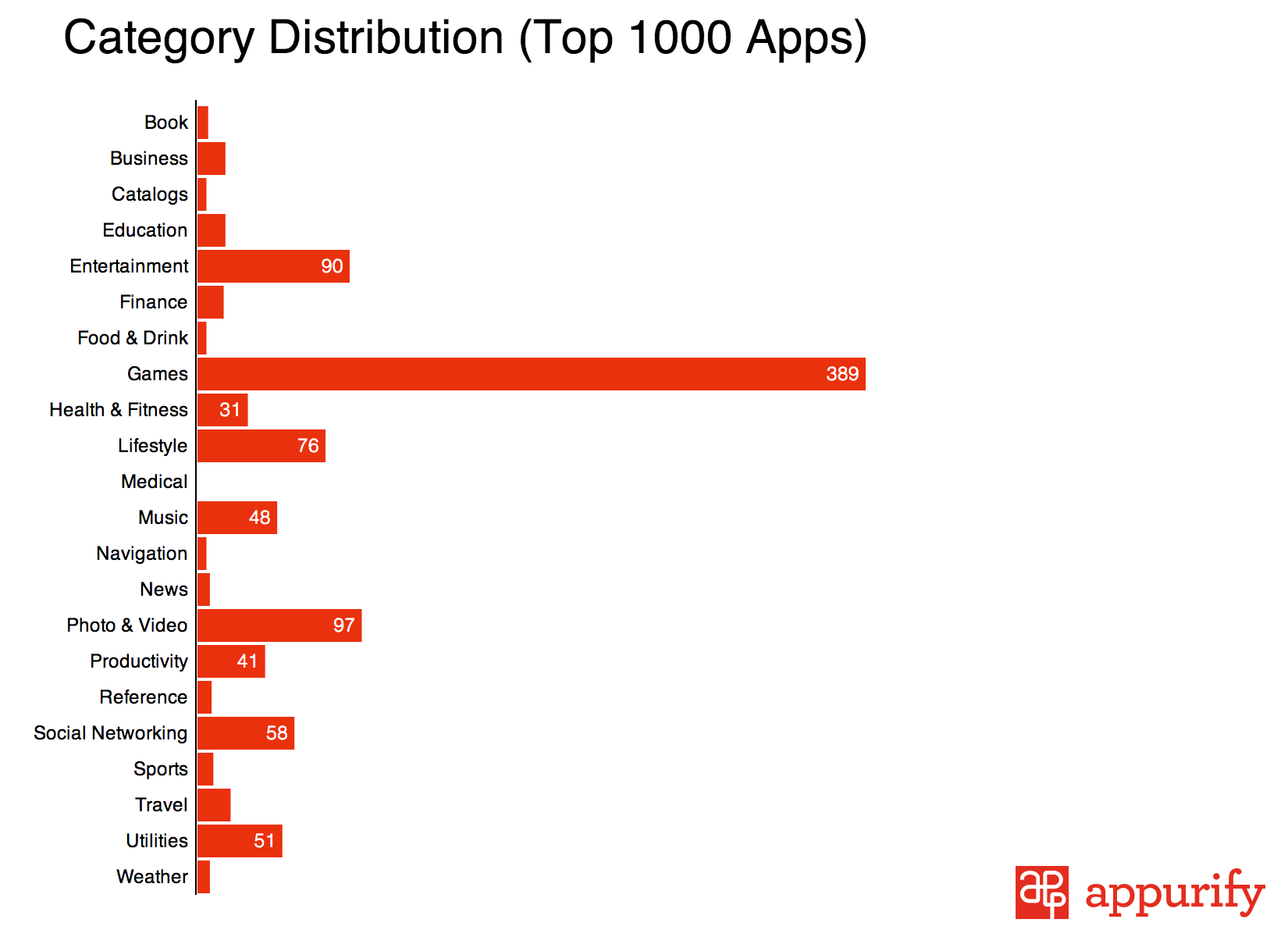
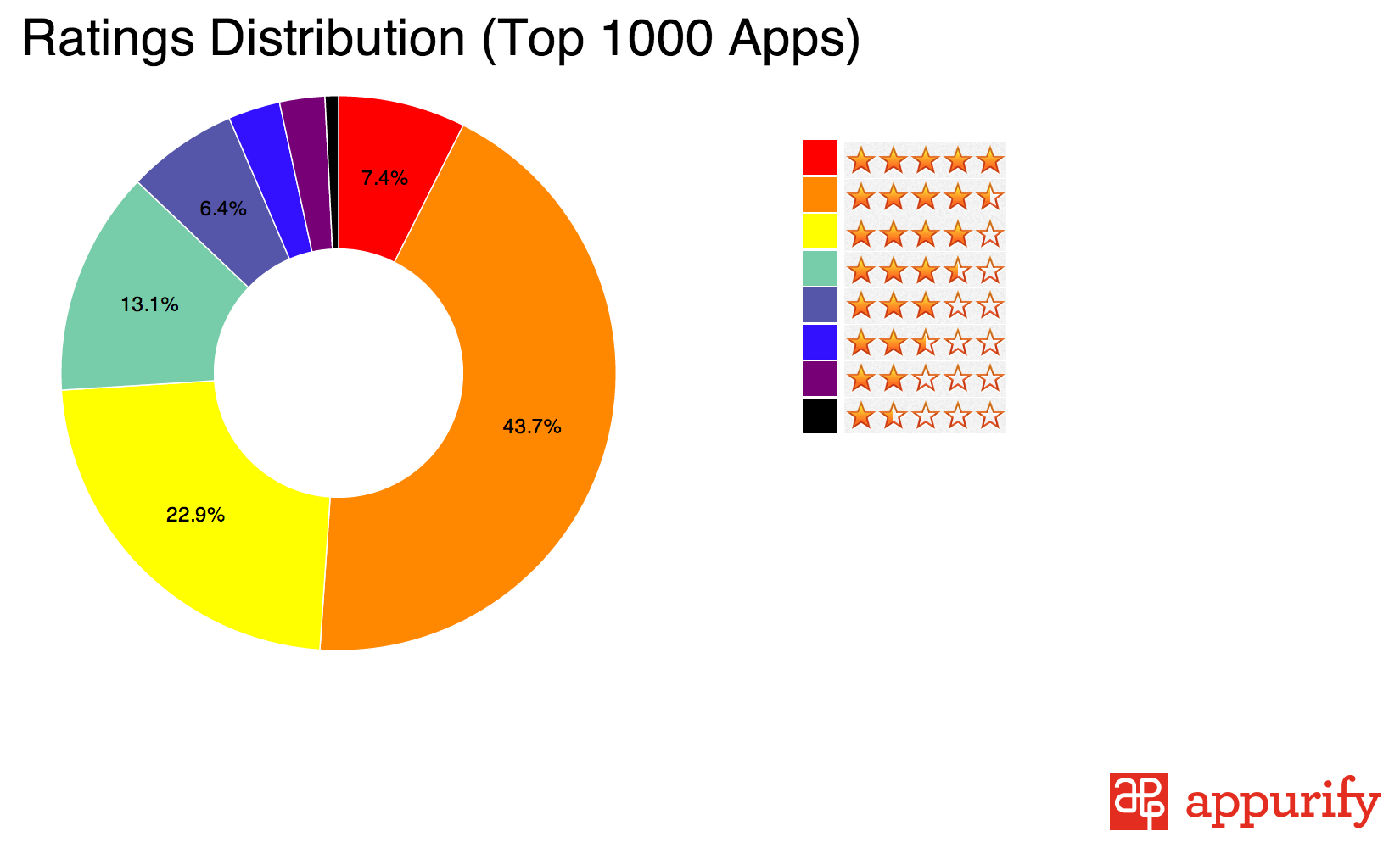
Experts advise application developers not to release a product with serious bugs and performance problems, as complaints will adversely affect the rating and stars. Of course, this warning is dictated by Appurify’s own benefit, but in fact it’s correct. Previously, this startup managed to find out that in half the cases, critical reviews with 1 star in the App Store were related to performance. In addition, you yourself might have noticed this from your personal experience.
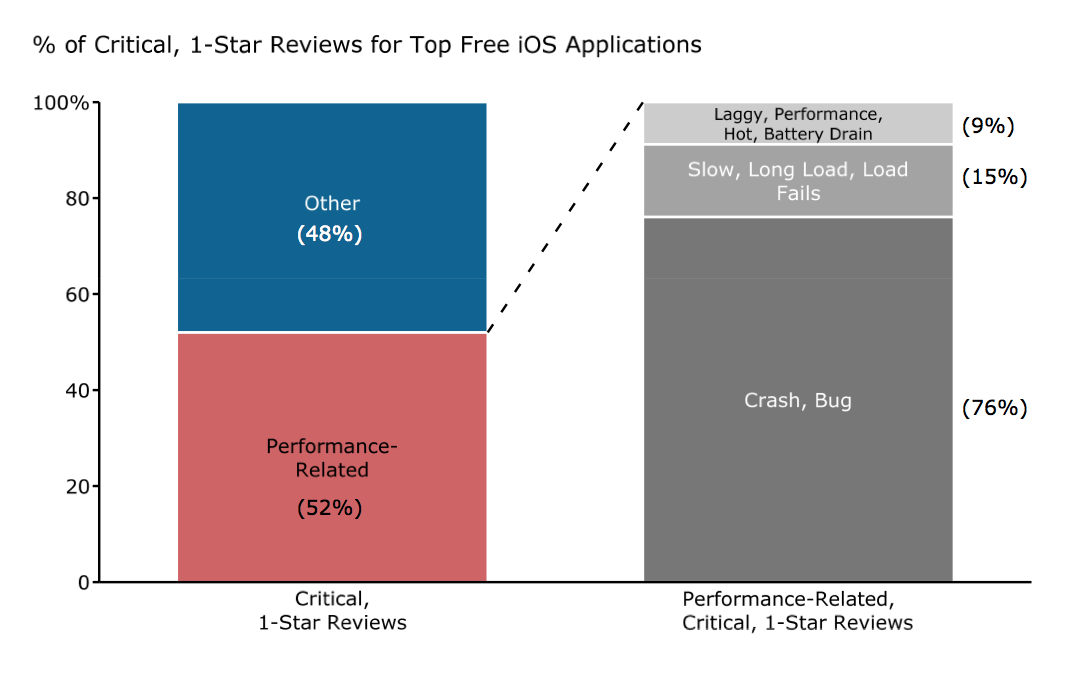
The App Store lacks a tool for communication between developers and users of applications - as it is now organized on Google Play. As a result, many have resorted to alternative ways of collecting feedback and communicating with users - outside the walls of the App Store. For this, for example, use the tools Appsfire, Helpshift, Apptentive, Appboy, AskingPoint, and others. The idea behind these services is to bring 1-star reviews out of the App Store, and help users solve their problems. However, now the use of such applications can also lead to an outflow of user reviews and a low position in the App Store list.
Previously, to determine the place in the list, Apple App Store algorithms took into account two main factors: the number and speed of downloads. Estimates, in turn, began to be taken into account somewhere in July - this was previously reported in Fiksu, and today this data was confirmed in Appurify.
Developers can release updates with fixed bugs and performance problems - this will give them a chance to start everything from scratch. The new format of the rating has more noticeably influenced the App Store, as well as users, who first of all pay attention to ratings, before buying one or another application.
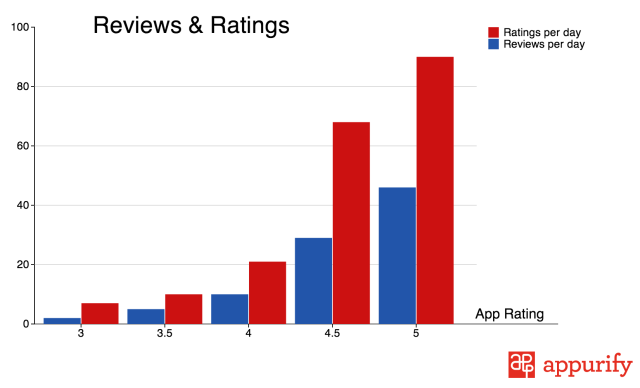
In addition, Appurify found that, given the number of feedback received per day, applications with higher ratings received more ratings than poorly rated applications. If you compare applications with 4 and 4.5 stars, for example, then for the latter this indicator has actually tripled. Consequently, each rating change by half a star can potentially triple the number of ratings and increase the frequency of reviews.
Appurify also divided the applications into three categories (Top 300, 300-600, and 600+), and found that the higher the application is on the list, the more often it gets feedback.
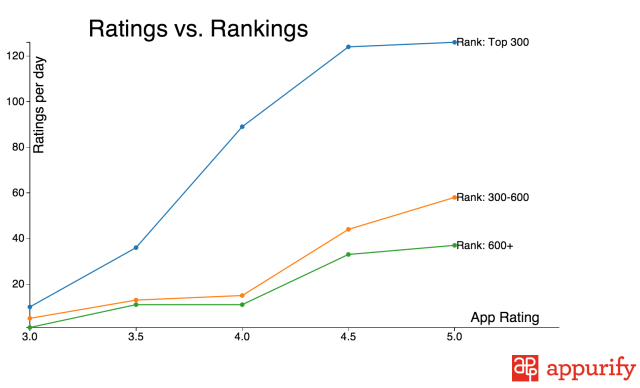
This discovery seems very obvious, because applications that are higher in the lists probably have more users (for example, applications with 4.5 stars download approximately 3.7 times more people than applications with 3.5 stars), and, consequently, to get feedback. And yet, now the developer can use the new ranking algorithm to further increase the frequency of reviews and the average rating, which, in turn, can be used to raise the application in the lists.
As Krishna Ramamurthy, Ph.D., Appurify data scientist explains, when you consider that applications with a higher score (say, the Top 300 category) receive feedback more often than an application with a lower score, and the fact that this activity over time has a cumulative effect; it can be concluded that applications with higher scores get significantly better positions in lists over time than applications with lower ratings.
“We assume that Apple uses the [current average] rating for ranking algorithms, because it is the only way to explain the fact that as scores are accumulated, the number of clicks on feedback is much higher for applications with higher ratings,” says Ramamurthy.
The full report can be found here on the Appurify website.
Source - techcrunch.com/2013/09/06/new-report-on-apples-app-store-algorithm-change-shows-how-even-a-minor-ratings-shift-affects-top-apps/1stars
The report also deals with other aspects of this change, including the number of stars counted and the importance of mobile app updates.
These discoveries are the result of two months of work for the Appurify team, which now also includes specialists from cisimple, a competing application testing firm that joined Appurify in August.
In Appurify analyzed the first thousand applications in the list of iTunes App Store, among which was a third of games, 62 paid applications and 590 free applications with the ability to expand functionality for an additional fee. More than half of the applications on this list had at least 4.5 stars, and most of them (75%) were rated at least 4 stars. This discovery is not surprising, but Appurify emphasizes that, apparently, now the presence of 4 stars has practically become the minimum requirement for getting into the first 1000.
')


Experts advise application developers not to release a product with serious bugs and performance problems, as complaints will adversely affect the rating and stars. Of course, this warning is dictated by Appurify’s own benefit, but in fact it’s correct. Previously, this startup managed to find out that in half the cases, critical reviews with 1 star in the App Store were related to performance. In addition, you yourself might have noticed this from your personal experience.

The App Store lacks a tool for communication between developers and users of applications - as it is now organized on Google Play. As a result, many have resorted to alternative ways of collecting feedback and communicating with users - outside the walls of the App Store. For this, for example, use the tools Appsfire, Helpshift, Apptentive, Appboy, AskingPoint, and others. The idea behind these services is to bring 1-star reviews out of the App Store, and help users solve their problems. However, now the use of such applications can also lead to an outflow of user reviews and a low position in the App Store list.
Previously, to determine the place in the list, Apple App Store algorithms took into account two main factors: the number and speed of downloads. Estimates, in turn, began to be taken into account somewhere in July - this was previously reported in Fiksu, and today this data was confirmed in Appurify.
Developers can release updates with fixed bugs and performance problems - this will give them a chance to start everything from scratch. The new format of the rating has more noticeably influenced the App Store, as well as users, who first of all pay attention to ratings, before buying one or another application.

In addition, Appurify found that, given the number of feedback received per day, applications with higher ratings received more ratings than poorly rated applications. If you compare applications with 4 and 4.5 stars, for example, then for the latter this indicator has actually tripled. Consequently, each rating change by half a star can potentially triple the number of ratings and increase the frequency of reviews.
Appurify also divided the applications into three categories (Top 300, 300-600, and 600+), and found that the higher the application is on the list, the more often it gets feedback.

This discovery seems very obvious, because applications that are higher in the lists probably have more users (for example, applications with 4.5 stars download approximately 3.7 times more people than applications with 3.5 stars), and, consequently, to get feedback. And yet, now the developer can use the new ranking algorithm to further increase the frequency of reviews and the average rating, which, in turn, can be used to raise the application in the lists.
As Krishna Ramamurthy, Ph.D., Appurify data scientist explains, when you consider that applications with a higher score (say, the Top 300 category) receive feedback more often than an application with a lower score, and the fact that this activity over time has a cumulative effect; it can be concluded that applications with higher scores get significantly better positions in lists over time than applications with lower ratings.
“We assume that Apple uses the [current average] rating for ranking algorithms, because it is the only way to explain the fact that as scores are accumulated, the number of clicks on feedback is much higher for applications with higher ratings,” says Ramamurthy.
The full report can be found here on the Appurify website.
Source - techcrunch.com/2013/09/06/new-report-on-apples-app-store-algorithm-change-shows-how-even-a-minor-ratings-shift-affects-top-apps/1stars
Source: https://habr.com/ru/post/196072/
All Articles